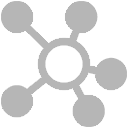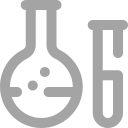
Product Description
Salinomycin is an inhibitor of Wnt/β-catenin signaling, which acts on the Wnt/Fzd/LRP complex. Salinomycin strongly suppresses Wnt1-stimulated reporter activity with an IC50 of 163 nM, and reduces β-catenin levels.
IC50 & Target: IC50: 163 nM (Wnt1-stimulated reporter)[1]
In Vitro: Salinomycin is a potent inhibitor of the Wnt signaling cascade. Incubation of the malignant lymphocytes with Salinomycin induces apoptosis within 48 h, with a mean IC50 of 230 nM. Salinomycin is also an antibiotic potassium ionophore, has been reported recently to act as a selective breast cancer stem cell inhibitor[1]. Salinomycin is a novel and an effective anticancer drug, inhibits SW620 cells and Cisp-resistant SW620 cells with IC50 of 1.54±0.23 μM and 0.32±0.05 μM, respectively. Salinomycin is found to have the ability to kill both cancer stem cells (CSCs) and therapy-resistant cancer cells. After continuous Salinomycin treatment for 48 h, the apoptotic cells are observed under the microscope and counted randomly at least 100 cells in one field. The number of apoptotic cells which are stained by Hoechst33342 is significantly increased in Cisp-resistant SW620 cells (20.20±3.72) than that of SW620 cells (9.40±2.07) per 100 cells (p<0.05). After treatment with Salinomycin for 48 h, flow cytometric analysis is used to detect the cell apoptosis both in SW620 cells and Cisp-resistant SW620 cells. The cell apoptotic rate in Cisp-resistant SW620 cells (37.82±3.63%) is significantly higher than that of SW620 cells (16.78±2.56%) (p<0.05)[2].
In Vivo: After administration of 4 mg/kg Salinomycin (Sal), 8 mg/kg Salinomycin and 10 uL/g saline water for 6 weeks, the mice are sacrificed. The size of the liver tumors in the Salinomycin treatment groups diminishes compare with the control group. The mean diameter of the tumors decreases from 12.17 mm to 3.67 mm (p<0.05) and the mean volume (V=length×width2×0.5) of the tumors decreases from 819 mm3 to 25.25 mm3 (p<0.05). Next, the tumors are harvested, followed by HE staining, immunohistochemistry, and TUNEL assays, to assess the anti-tumor activity of Salinomycin. HE staining shows that the structure of the liver cancer tissue:nuclei of different sizes, hepatic cord structure is destroyed. Immunohistochemistry shows that PCNA expression is lower after Salinomycin treatment. HE staining and TUNEL assays indicates the Salinomycin-treated groups has higher apoptosis rates than control. Furthermore, immunohistochemistry shows an increased Bax/Bcl-2 ratio after Salinomycin treatment. The protein expression of β-catenin decreases in the Salinomycin treatment groups compared with control[3]. Salinomycin is a kind of monocarboxylic acid polyether type antibiotics, produced by the fermentation of Streptomyces albus, possesses a specific cyclic structure, and can form a complex compound with the pathogenic microorganisms and the extracellular cations of coccidian, especially K+, Na+, Rb+, to alter the intracellular and extracellular ion concentrations[4].

Information
CAS No53003-10-4
FormulaC42H70O11
Clinical Informationclinicalinformation
PathwayStem Cell/Wnt
Anti-infection
Autophagy
Stem Cell/Wnt
Autophagy
Targetβ-catenin
Bacterial
Autophagy
Wnt
Mitophagy

Specifications
Purity / Grade>98%
SolubilityDMSO : ≥ 36.7 mg/mL (48.87 mM)
Smilessmiles

Misc Information
Alternative NamesProcoxacin
Observed Molecular Weight751